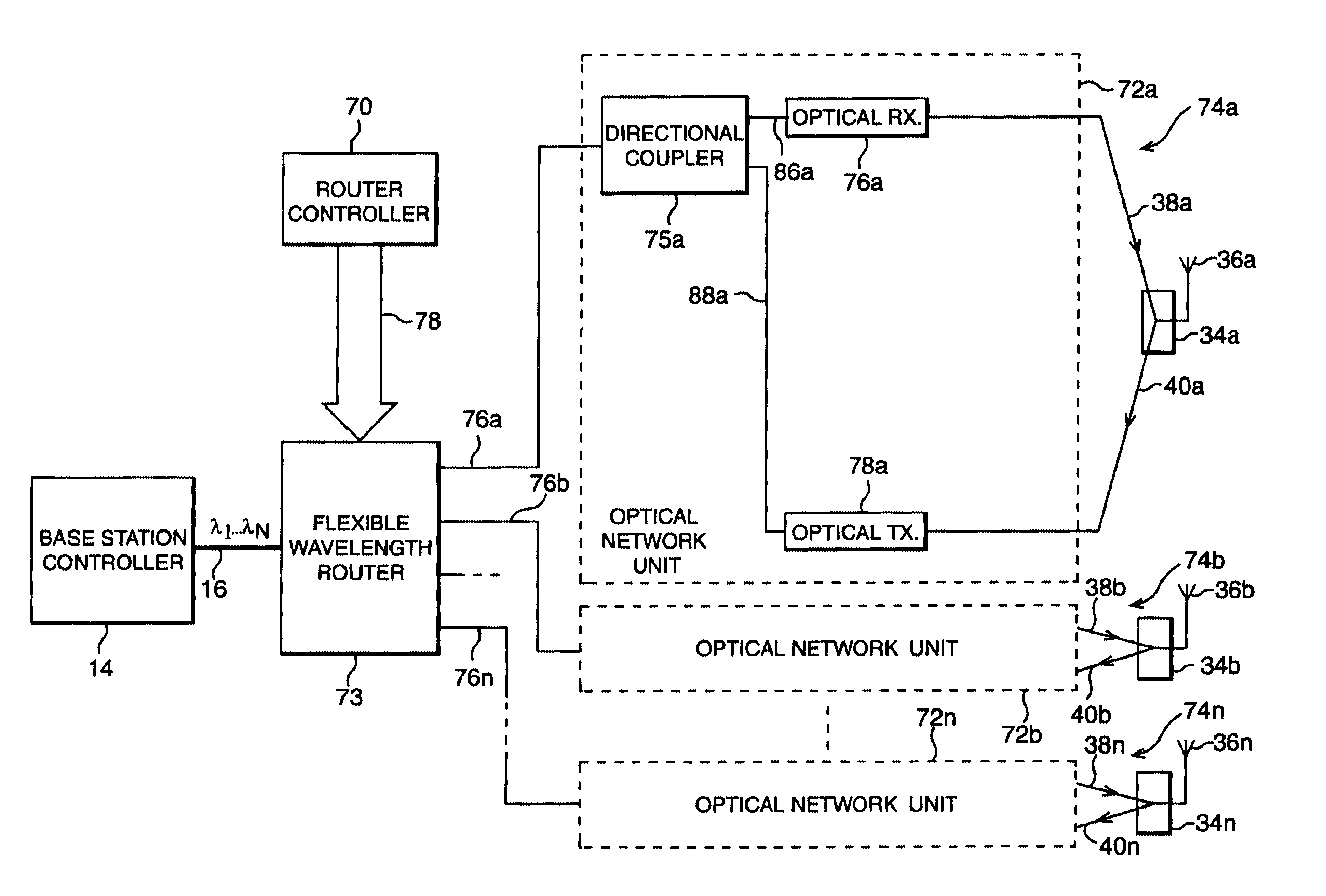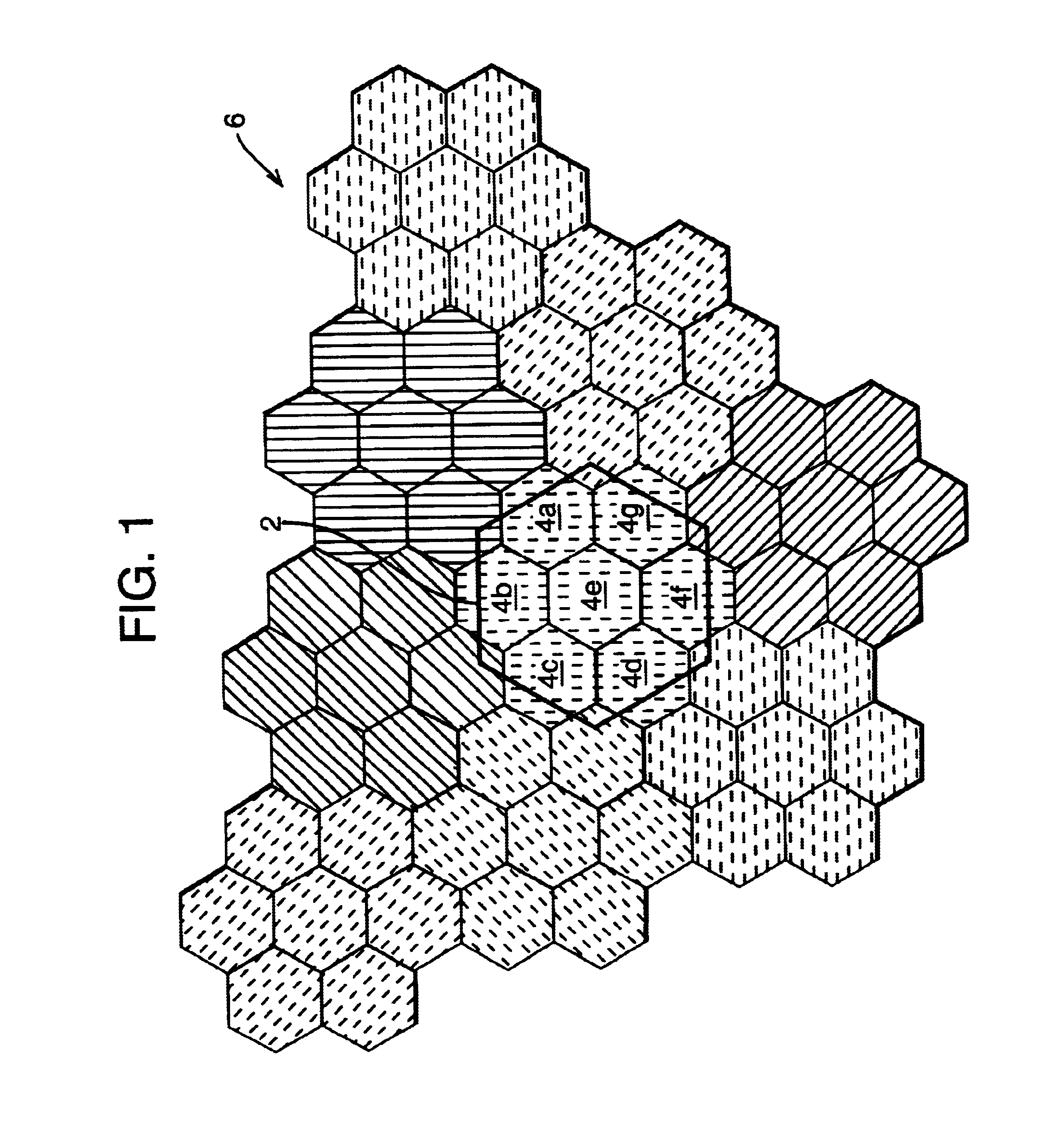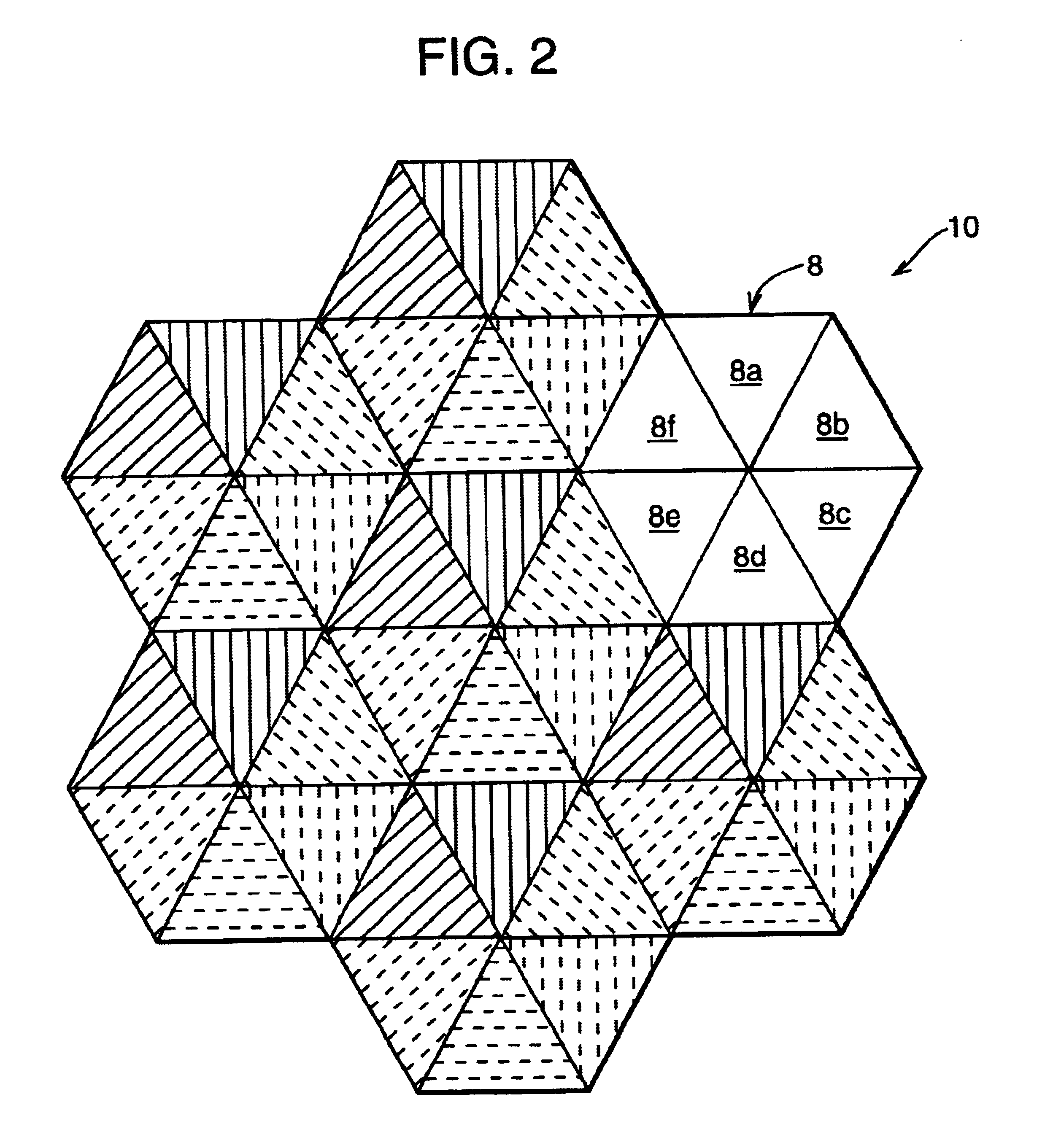Re-configurable fibre wireless network
a wireless network and reconfigurable technology, applied in wireless communication, wireless communication, multiplex communication, etc., can solve the problems of reducing the service life of the base station
- Summary
- Abstract
- Description
- Claims
- Application Information
AI Technical Summary
Problems solved by technology
Method used
Image
Examples
Embodiment Construction
Referring to FIG. 1, there is illustrated a portion 6 of a cellular network. In the portion of the cellular network 6 shown in FIG. 1, the cells are split into micro-cells. For example, the micro-cells 4a to 4g are derived from the macro-cell 2 of a conventional cellular structure. In the portion of the cellular network illustrated in FIG. 1 it is assumed that each micro-cell is provided with an omni-directional antenna. Thus the cellular structure shown in FIG. 1 has evolved from a macro-cellular structure in which each macro-cell had a single omni-directional antenna, to a micro-cellular structure in which each macro-cell is replaced by seven micro-cells each having an omni-directional antenna.
FIG. 2 illustrates schematically the evolution from a macro-cellular structure to a micro-cellular structure using multi-sector antennas. The portion 10 of the cellular network shown in FIG. 2 has each macro-cell split into sectors: by employing a multi-sector antenna in each macro-cell. Thu...
PUM
 Login to View More
Login to View More Abstract
Description
Claims
Application Information
 Login to View More
Login to View More - R&D
- Intellectual Property
- Life Sciences
- Materials
- Tech Scout
- Unparalleled Data Quality
- Higher Quality Content
- 60% Fewer Hallucinations
Browse by: Latest US Patents, China's latest patents, Technical Efficacy Thesaurus, Application Domain, Technology Topic, Popular Technical Reports.
© 2025 PatSnap. All rights reserved.Legal|Privacy policy|Modern Slavery Act Transparency Statement|Sitemap|About US| Contact US: help@patsnap.com



